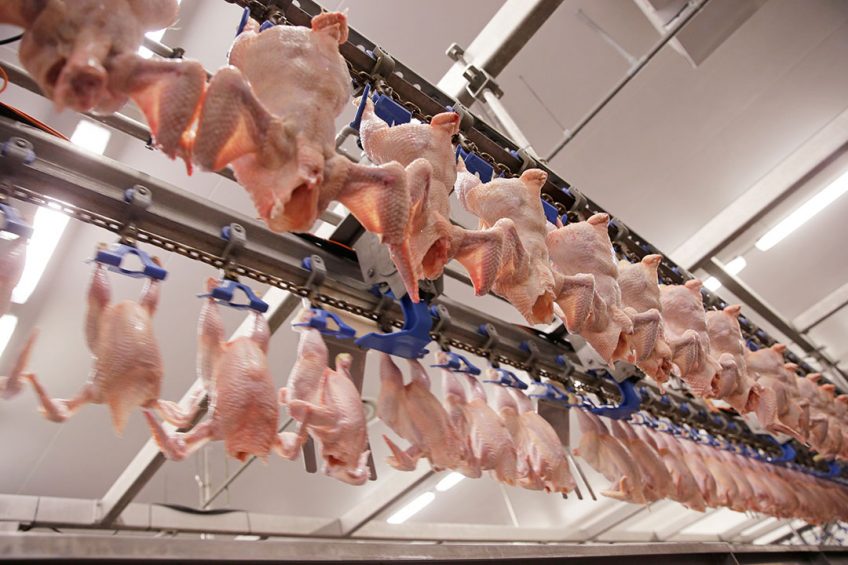Evaluation of meat from slow-growing broilers

It is believed that by growing chickens in a semi-intensive system and giving them more time to attain maturity, muscle abnormalities in slower growing chickens might be reduced. A recent study evaluated carcass quality, composition and consumer evaluation of meat from slow-growing broilers compared with commercial broilers
Consumer demand for chickens as a primary source of animal protein has contributed to the growth of the broiler industry around the world. In the last couple of decades, advances in genomics, management practices and improved nutrition have made modern broiler birds grow at a faster rate and they can now reach market weight (2 kg) as early as 5 to 6 weeks.
Muscle abnormalities in chickens
Studies suggest that in fast-growing birds intensive muscle growth causes increased muscle abnormalities such as woody breast and white striping. It is therefore believed that by growing chickens in a semi-intensive system and giving them more time to attain maturity, muscle abnormalities might be reduced.
Increasing demand for slow-growing broilers
Market demand for slow-growing broiler chickens is steadily increasing. New strains of slow-growing broilers are being introduced to meet this demand. The Indbro coloured broiler is such a strain that was developed to cater to demand for slow-growing broiler meat.
Meat quality for slow-growing breeds
Meat from slow-growing breeds is less tender and less juicy than meat from conventional chicken breeds and consumer preferences may be affected by perceptions and labels rather than by actual sensory characteristics.
A new broiler strain
A new broiler strain introduced as an alternative to native birds and commercial fast-growing broilers, uses the tropical adaptability, disease resistance, and colourful plumage of native breeds and at the same time the feed efficiency and growth rate of broiler breeds. This alternative needed to be evaluated to help both producers and consumers make informed decisions.
Also read: The nutritional needs of slow-growing birds
Tasty alternative
This study was undertaken to compare the meat quality, composition and consumer preferences for meat from slow-growing and commercial white broiler chickens.
Slow-grower v commercial chicken
The slow-growing birds were from an Indbro strain, which is multicoloured. Commercial white broilers (vencobb strain) weighed approximately 2.0 kg and were 36 days old. The dressing percentage, breast meat yield, meat bone ratio, and muscle fibre diameter were higher in the commercial broilers. However, the cooking yield of drumstick and breast meat did not differ significantly between the two genotypes. The shear force value and protein content of thigh meat were higher in slow-growing broilers compared to commercial broilers, while the total fatty acid and saturated acid content of slow-growing broiler breast meat were significantly lower.
Also read: The paradox of slow-growing broilers
Consumer choice
A total of 67% of consumers preferred the meat and meat products prepared from slow-growing broiler meat and semi-trained panellists were able to differentiate between slow-growing and commercial fast-growing broiler meat. All the sensory attributes of meat and meat products from slow-growing broilers were similar to those of commercial broiler meat. Meat from slow-growing broiler chickens thus has the potential to provide the tasty, alternative poultry meat that consumers appear to want.












